Two inclined frictionless tracks, one gradual and the other steep meet at O, from where two stones are allowed to slide down from rest, one on each track. Will the stones reach the bottom at the same time ? Will they reach there with the same speed ? Explain.
The correct Answer is:C
As both surfaces I and II are frictionless and two stones slide from rest from the same height, therefore, both the stones reach the bottom with same speed . As acceleration down plane II is larger is greater than , therefore, stone II reaches the bottom earlier than stone I.
Topper's Solved these Questions
- BOOK - PRADEEPCHAPTER - WORK, ENERGY AND POWEREXERCISE - JEE (Main and Advanced)82videos
WORK, ENERGY AND POWER
- BOOK - PRADEEPCHAPTER - WORK, ENERGY AND POWEREXERCISE - Comprehension9videos
WORK, ENERGY AND POWER
- BOOK - PRADEEPCHAPTER - WORK, ENERGY AND POWEREXERCISE - Problems For Practice76videos
WORK, ENERGY AND POWER
- BOOK - PRADEEPCHAPTER - THERMODYNAMICSEXERCISE - Assertion- Reason Type Questions19videos
THERMODYNAMICS
Similar Questions
Two inclined frictionless tracks, one gradual and the other steep meet at A from where to stones are allowed to slide down from rest, one on each track (fig.) Will hte stones reach the bottom at the same time? Will they reach there with the same speed? Explain, given θ1=30∘, θ92)=60∘ and h=10m. What are the speeds and time taken by the two stones?
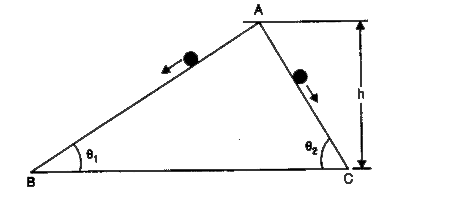 View Solution
View SolutionTwo inclined frictionless tracks , one gradual and the other sleep meet at A from where two stones are allowed to slide down from rest. One on each track as shown in figure. Which of the following statement is correct?
 View Solution
View Solution
Knowledge Check
- Question 1 - Select One
Two inclined frictionless tracks, one gradual and the other steep meet at a from where two stones are allowed to slide down from rest, one on each track as shown in Figure. Which of the following statement is correct ?
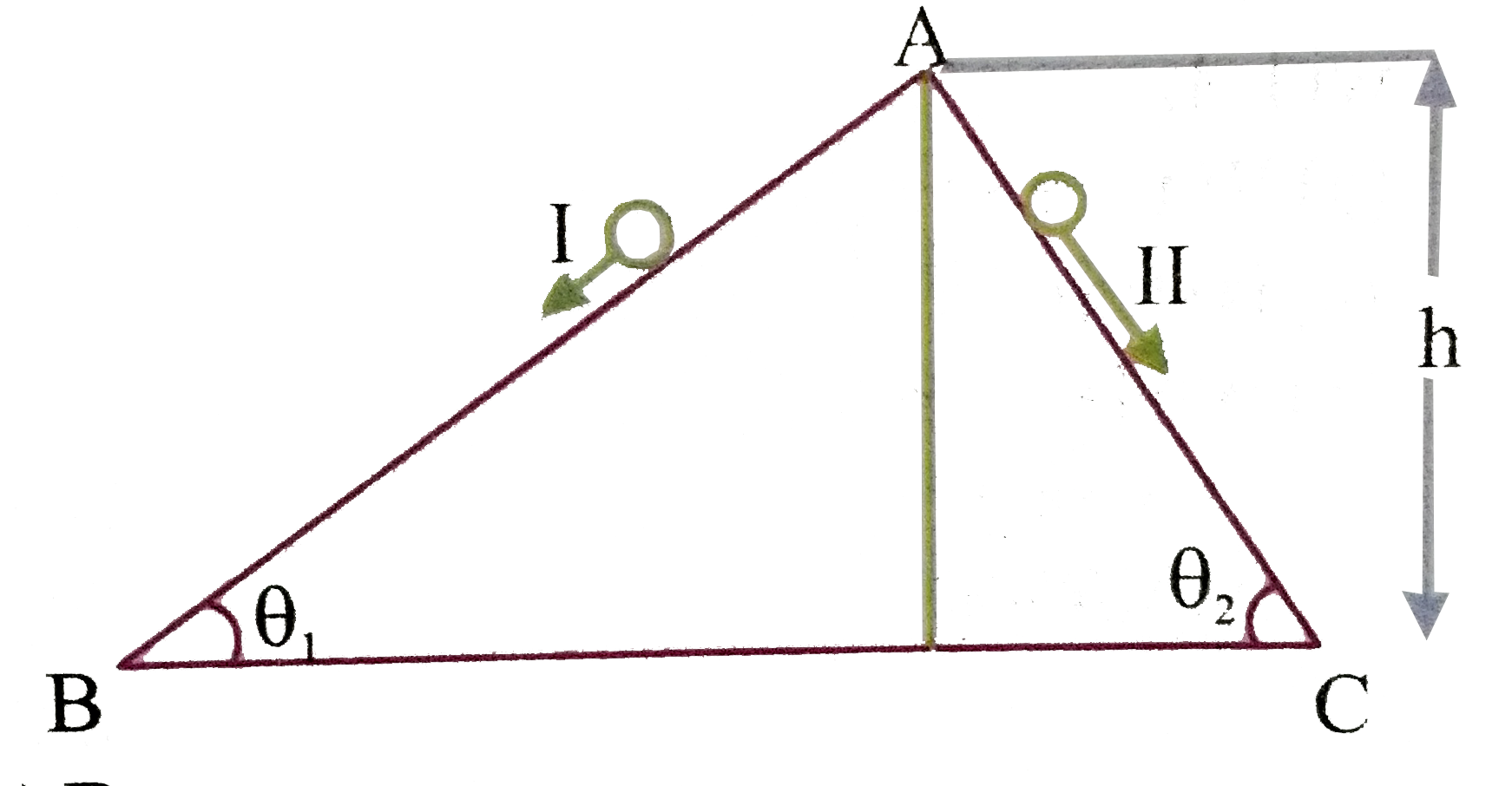 .ABoth the stone reach the botton at the same time but not with the same speed.BBoth the stone reach the bottom with the same speed and stone I reaches the bottom earlier than stone II Figure.CBoth the stones reach the bottom with the same speed and stone II reaches the bottom earlier than stone I.DBoth the stones reach the bottom at different times and with different speeds.
.ABoth the stone reach the botton at the same time but not with the same speed.BBoth the stone reach the bottom with the same speed and stone I reaches the bottom earlier than stone II Figure.CBoth the stones reach the bottom with the same speed and stone II reaches the bottom earlier than stone I.DBoth the stones reach the bottom at different times and with different speeds. - Question 2 - Select One
Two inclined frictionless tracks, one gradual and other steep meet at 'A' from where two stones are allowed to slide down from rest, one on each track as shown in figure. The speed of two stones on reaching at bottom are v1andv2 respectively. v1&v2 are related as
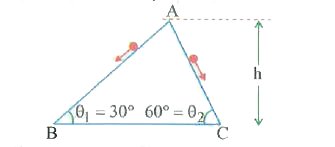 Av1>v2Bv1<v2Cv1=v2Ddata insufficient
Av1>v2Bv1<v2Cv1=v2Ddata insufficient - Question 3 - Select One
An object is placed on the surface of a smooth inclined plane of inclination . It takes time t to reach the bottom of the inclined plane. If the same object is allowed to slide down rough inclined plane of same inclination , it takes time nt to reach the bottom where n is a number greater than 1. The coefficient of friction is given by -
Aμ=tanθ[1−1n2]Bμ=cotθ[1−1n2]Cμ=tanθ[1−1n2]1/2Dμ=cotθ[1−1n2]1/2
A stone is projected horizontally from the top of a towar. At the same time , another stone is dropped down from the same height . Which ball will reach the ground earlier? Will they hit the ground with same velocity ?
View SolutionA and B are two identical rings released from the top of an inclined plane . A slides down and B rolls down. Then which reaches the bottom first ?
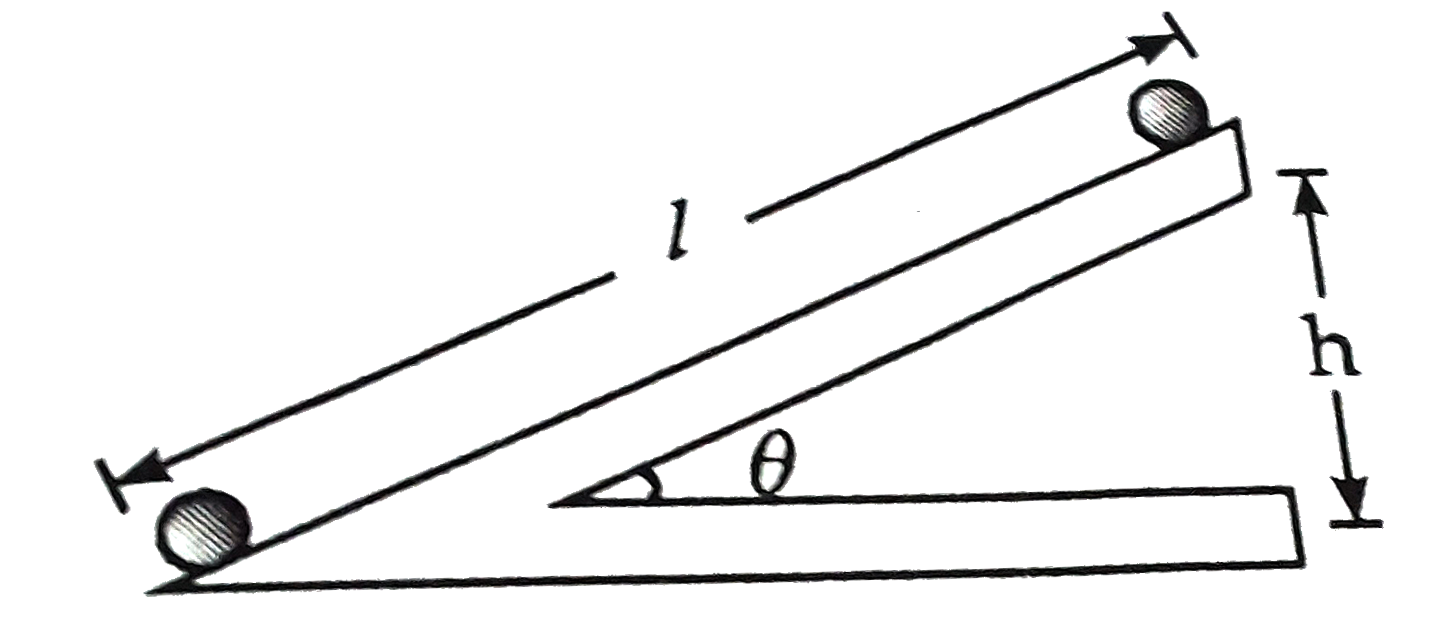 View Solution
View SolutionTwo spherical bobs, one metallic and the other of glass, of the same size are allowed to fall freely from the same height above the ground. Which of the two would reach earlier and why?
View SolutionA smooth inclined plane is inclined at an angle θ with the horizontal. A body starts from rest and slides down the inclined surface. The time taken by the body to reach the bottom is
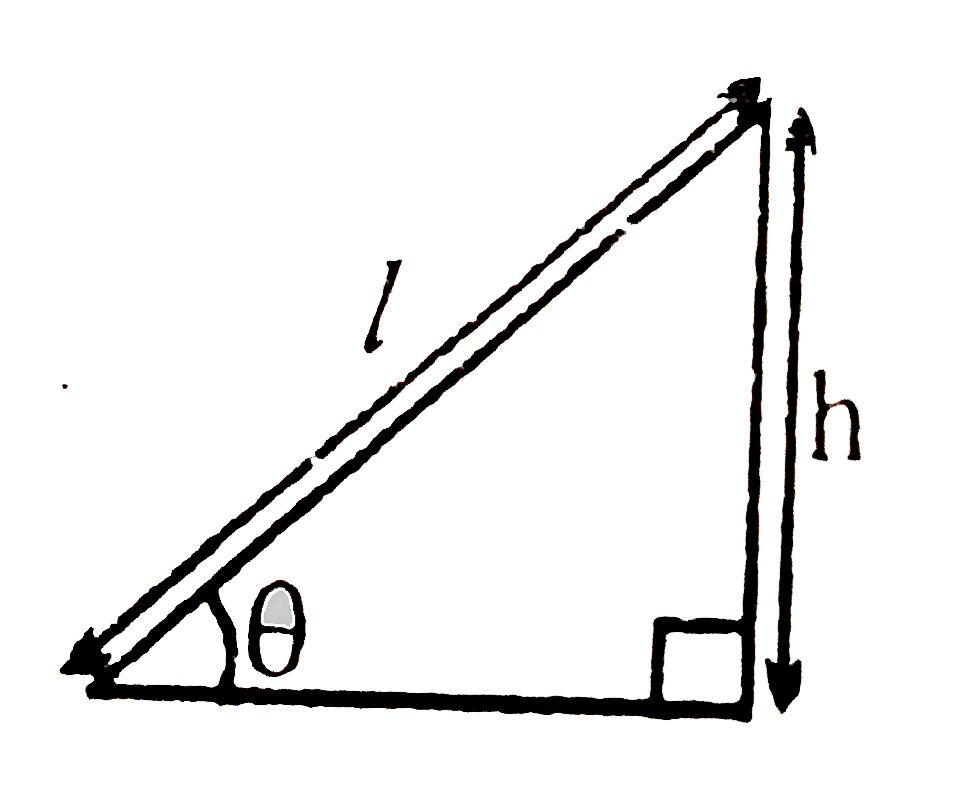 View Solution
View SolutionAn object is placed on the surface of a smooth inclined plane of inclination θ. It takes time t to reach the bottom. If the same object is allowed to slide down a rough inclined plane of inclination θ, it takes time nt to reach the bottom where n is a number greater than 1. The coefficient of friction μ is given by:-
View Solution

